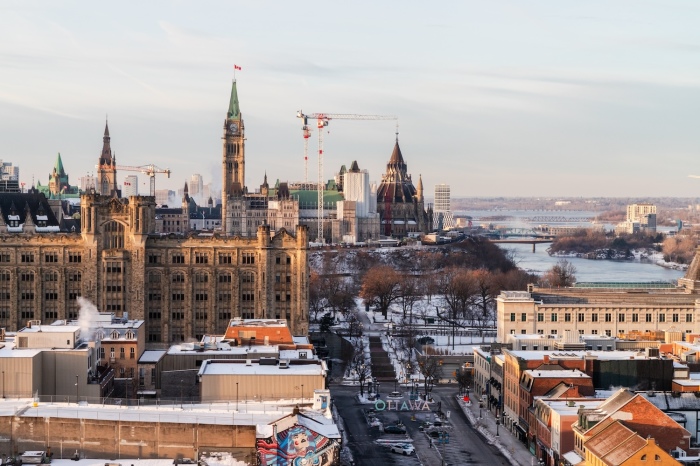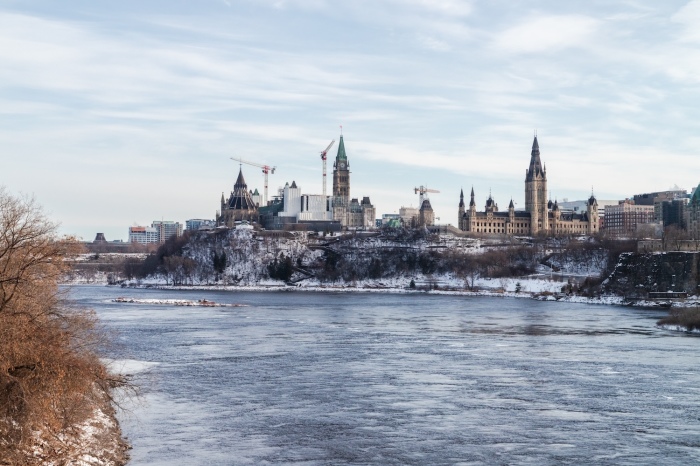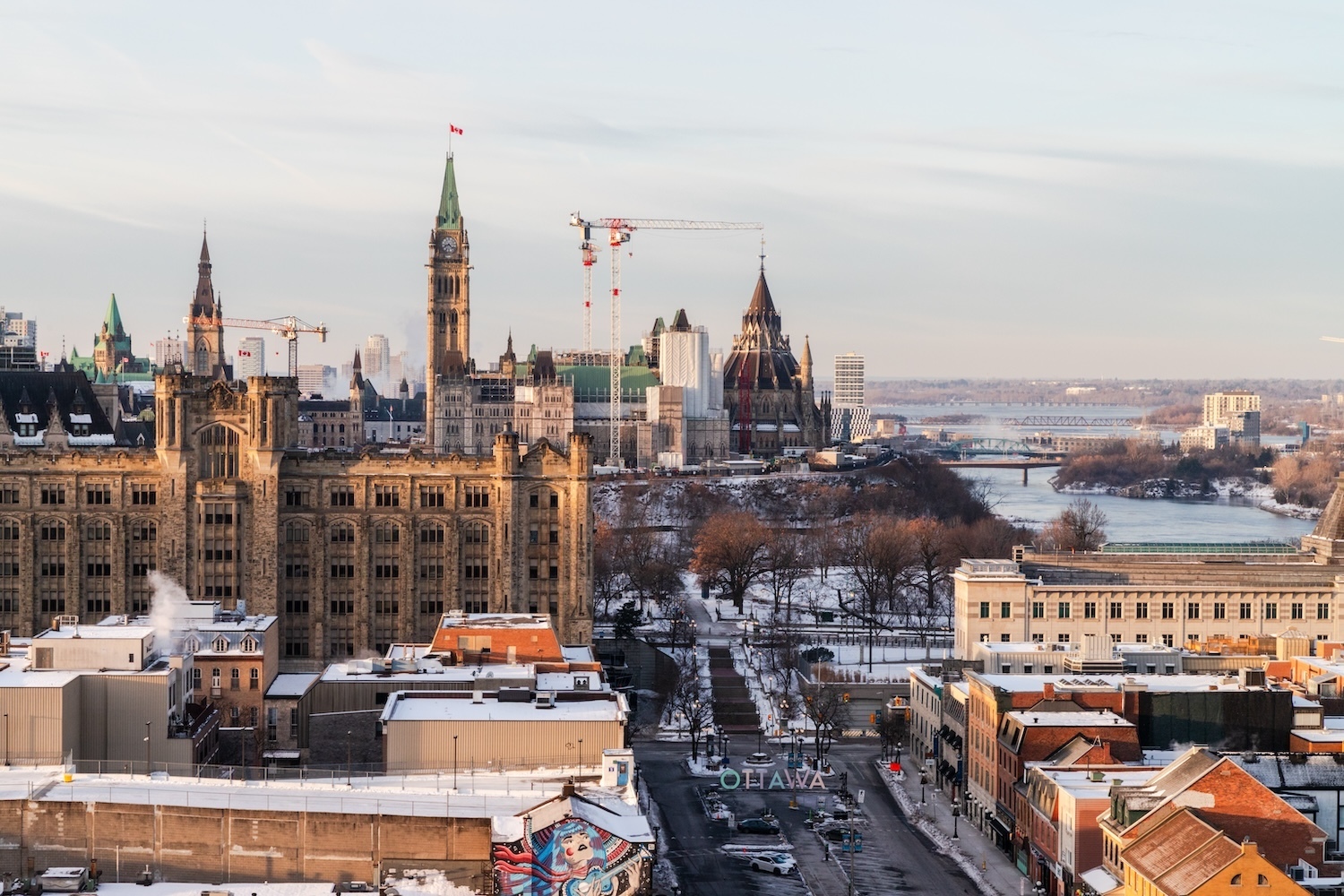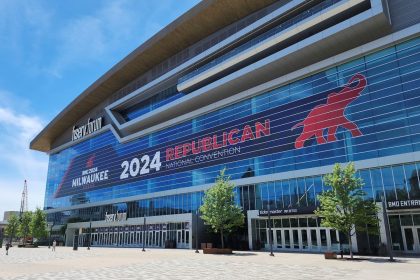
As capital cities go, the Canadian capital of Ottawa is a somewhat overlooked destination, even though it’s the fourth-largest city in the country.
Maybe that’s because getting here isn’t easy, thanks to limited nonstop flights to and from the United States. Many readers who decide to fly here must make one or two connections or fly to Montreal, rent a car and drive two hours.
My visit came just before Christmas, not long after President Donald Trump first floated the idea of annexation and the admission of Canada into the Union as the 51st state.
While that will never happen, it’s hardly a new idea. In fact, this year is the 250th anniversary of the failed invasion of Quebec during the American Revolution.
If I had to describe Ottawa in a single sentence, I would say it felt both familiar and just different enough.
Familiar because the city is regularly used in TV shows and movies as a stand-in for big-city America. But different because while Ontario, the province Ottawa is in, is Anglophone, you can feel (or rather, hear) the French influence of Quebec, which is just across the Ottawa River — one of three rivers defining the city’s geography.
Though the streetscape passes as American, a closer look will reveal distinct differences. For example, street and place names are decidedly British, which makes sense as Ottawa is, to this very day, the capital of a realm belonging to King Charles III. And it was his great-great-great-grandmother, Queen Victoria, who chose Ottawa to serve as the capital.
Nowhere is this British influence more evident than Parliament Hill, the Canadian version of Washington’s Capitol Hill.
The assorted Victorian Gothic revival buildings are home to the Canadian Parliament. However, the two legislative chambers, the elected House of Commons and appointed Senate, have relocated to other locations until the completion of a decade-long restoration and modernization project.

Despite construction fencing and a massive hole in the ground, the iconic Peace Tower is still visible. The tower replaced the original tower after a 1916 fire. At more than 300 feet tall, it contains a 53-bell carillon dedicated to the Canadians who fought and died for king and country during the Great War (World War I).
It’s not hard to imagine Washington looking a little more like Ottawa had American independence never happened in the way it did.
One of the best places to learn about the confluence of historical events that resulted in present-day Canada is the Canadian Museum of History.
Inside the museum, which is located on the Quebec side of the river in Gatineau, is a vast collection. The exhibits cover everything from the Natives and mixed-race Metis to the French influence in Quebec and the cultural melting pot that came with later waves of immigration. Strangely, the thousands of Americans loyal to the crown who left after the revolution seemed like an afterthought.
I thought the Canadian War Museum did better with the important British North American history, particularly the French loss at Quebec City in 1759. The victory by Major Gen. James Wolfe contributed to causes that fueled the American Revolution, which ultimately created our two countries as we know them today.
If you go
Byward Market is a short walk from Parliament Hill and the stately architecture of the Fairmont Chateau Laurier hotel. Named after the military engineer who constructed the Rideau Canal — a 123-mile passage that colonial Britain built as a backup to the American-controlled St. Lawrence River — the brick market dates to before Ottawa was named Ottawa. From public markets featuring seasonal produce to modern bars and restaurants, it has remained a popular spot despite some ups and downs.
The canal draws visitors and locals alike year-round. It recently opened for skating after the ice was sufficiently thick after a couple of disappointing seasons.
Parliament’s temporary chambers are open for tours, as is a well-done immersive experience. Tickets are free, though reservations are required. In the summer, a ceremonial guard is mounted by soldiers wearing full dress uniforms, including bearskin grenadier caps, identical to their British counterparts. Be sure also to visit Rideau Hall, where the governor general lives. The free tours are considerably easier to book than a comparable White House or Buckingham Palace tour.
Other museums worth visiting are the National Gallery of Canada and the Canada Aviation and Space Museum, which offers sightseeing flights.
I stayed at Hyatt’s Andaz, a block or so from Byward Market. The four-star hotel is in a high-rise with sweeping million-dollar views of Ottawa. For restaurants, 1 Elgin, a fine dining restaurant inside the National Arts Center; the Parisian-inspired Metropolitain Brasserie and Restaurant; and Aulde Dubliner & Pour House, a two-story Irish pub, are recommended.
Dennis Lennox writes a travel column for The Christian Post.
Dennis Lennox writes about travel, politics and religious affairs. He has been published in the Financial Times, Independent, The Detroit News, Toronto Sun and other publications. Follow @dennislennox on Twitter.






